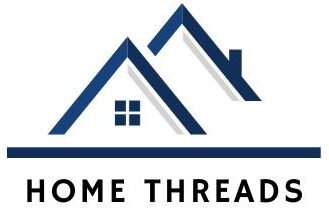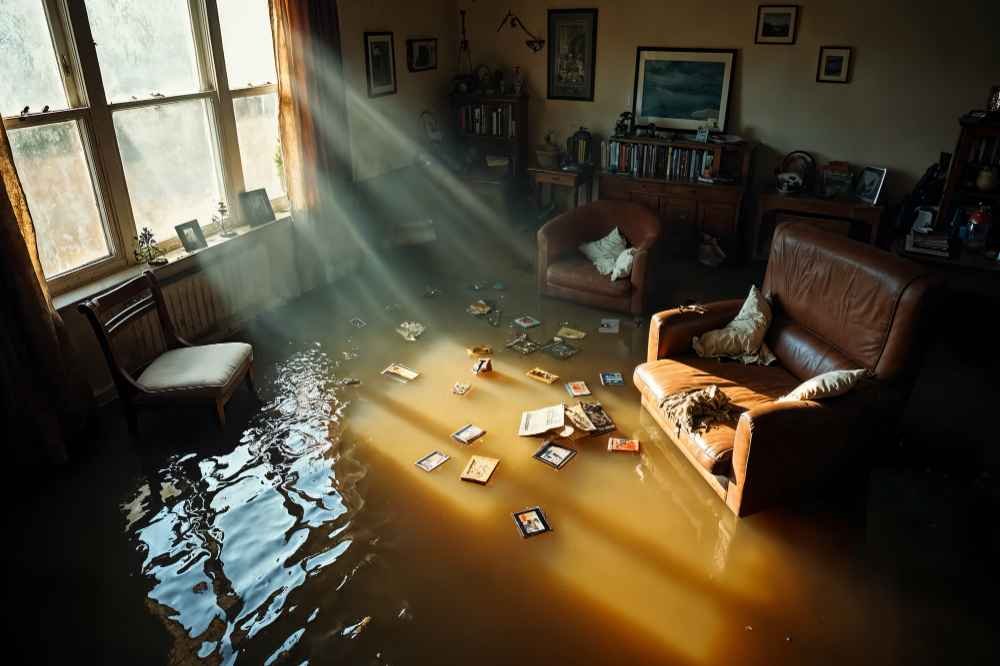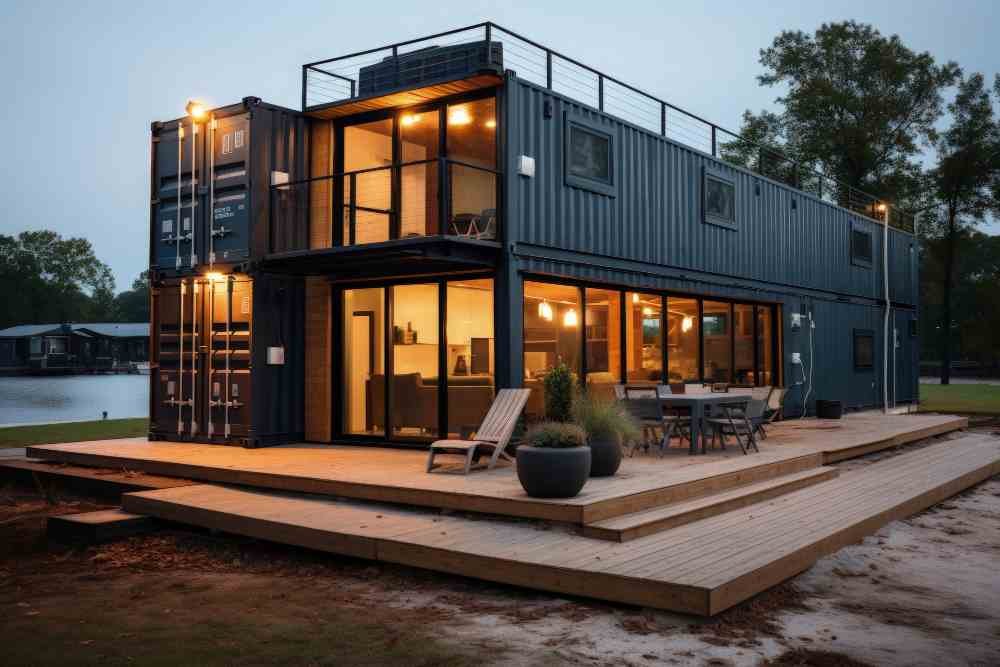Water is one of the most destructive forces that can impact a home, but not all water damage is the same. The difference between flood damage and standard water damage goes beyond where the water comes from—it affects insurance coverage, cleanup methods, and long-term structural outcomes. While both types can devastate property, flood damage is typically the result of natural events such as overflowing rivers, heavy rain, or storm surges, whereas standard water damage often stems from internal causes such as burst pipes or roof leaks. Understanding the distinction helps homeowners respond appropriately, avoid costly mistakes, and prepare for future incidents more effectively.
Defining Flood Damage Versus Water Damage
The primary distinction between flood damage and standard water damage lies in the source and scale of the intrusion. Flood damage results from natural events that raise water levels on normally dry land, affecting multiple properties at once. This could include flash floods, hurricanes, or snowmelt runoff. Water damage, on the other hand, usually results from localized issues inside the home—such as broken appliances, plumbing failures, or roof leaks. The classification matters because insurance companies treat these two categories differently. Homeowners insurance typically covers sudden and accidental water damage but excludes flooding unless a separate flood insurance policy is in place. Flood damage often involves contaminants such as sewage, mud, or debris, which complicate cleanup and require stricter sanitation procedures. Recognizing these distinctions ensures homeowners take proper action quickly and avoid delays in recovery or reimbursement.
The Scope and Severity of Flood Damage
Flood damage is often far more extensive than standard water damage because of its scale and the nature of the water involved. When floodwaters rise, they can infiltrate entire neighborhoods, submerging foundations, vehicles, and electrical systems. The water typically carries pollutants such as oil, bacteria, and pesticides, making cleanup both hazardous and labor-intensive. Drying out flooded structures takes significantly longer due to the sheer amount of saturation and contamination. Even after visible water is removed, moisture often lingers deep within materials like drywall and insulation, leading to hidden mold growth. In contrast, water damage from a burst pipe may affect only a few rooms and involve clean, controlled water sources. The widespread reach of flooding means restoration crews must address safety hazards, structural integrity, and air quality simultaneously. Many homeowners rely on professional services, such as water damage restoration in Vancouver, WA, to address these complex challenges safely and efficiently. Proper handling is essential to prevent long-term deterioration and health risks.
Health Hazards and Contamination Differences
Floodwaters pose serious health risks that differ significantly from typical water damage. Because floods collect runoff from streets, farms, and sewage systems, they often contain harmful bacteria, viruses, and toxic chemicals. This type of contamination requires specialized protective gear and industrial-grade cleaning solutions during restoration. In addition to pathogens, flood damage can introduce mold spores and allergens that thrive in damp environments. Standard water damage, while still capable of fostering mold, usually involves cleaner sources such as tap or rainwater, making it less hazardous if treated promptly. Flood-contaminated materials like carpeting, insulation, and drywall typically must be discarded, whereas items affected by standard water damage can sometimes be salvaged. The presence of mud and debris also complicates cleanup efforts, increasing the risk of respiratory irritation or infection for anyone entering the property. Understanding these health implications emphasizes why flood recovery demands heightened caution, immediate action, and comprehensive sanitation procedures.
Structural Impact and Material Degradation
The structural consequences of flood damage are often more severe because the volume and duration of water exposure compromise the very foundation of a building. Prolonged submersion weakens concrete, corrodes metal, and rots wood framing. Floodwater often seeps into crawl spaces and basements, where it exerts hydrostatic pressure that can cause cracking or bowing of foundation walls. Standard water damage usually affects isolated areas and can often be contained before reaching critical structural components. However, even small leaks can become major problems if ignored. Flood damage frequently requires reconstruction rather than repair, as flooring, insulation, and drywall may be beyond restoration. The difference lies not only in the amount of water but in how deeply it penetrates materials. Homes affected by flooding must undergo extensive drying, dehumidification, and structural inspection to ensure long-term safety. Without proper remediation, weakened foundations and warped walls can lead to future instability and costly repairs.
Insurance and Legal Considerations
Flood damage and water damage are treated very differently under most insurance policies, and misunderstanding this distinction can lead to significant financial setbacks. Standard homeowners insurance usually covers sudden water-related incidents, such as plumbing failures or appliance leaks, but excludes natural flooding. Flood coverage must be purchased separately, often through government-backed programs or private insurers. To qualify for claims, homeowners must document damage thoroughly and report it promptly. Flood insurance policies also have specific definitions of what constitutes a flood, generally requiring that water cover at least 2 acres or affect multiple properties. This distinction can be frustrating for homeowners who experience heavy rain or localized flooding that doesn’t meet the criteria. In contrast, standard water damage claims focus more on the immediacy of the incident rather than its cause. Understanding the nuances of coverage ensures faster claims processing and helps homeowners avoid disputes or denials during already stressful recovery periods.
Restoration Processes and Recovery Timelines
The restoration process for flood damage differs significantly from that of standard water damage due to contamination and saturation levels. Flood recovery begins with extensive safety assessments to identify electrical hazards and structural stability before cleanup. Once standing water is removed, professionals use industrial drying equipment and disinfectants to eliminate pathogens. In many cases, walls and flooring must be replaced entirely. Standard water damage restoration usually progresses faster, focusing primarily on moisture removal and minor repairs. The drying phase for flood damage can last weeks, while clean water incidents often resolve within days. Air quality monitoring and mold prevention are critical in both scenarios, but are especially vital during flood recovery due to the higher contamination risk. The complexity of flood restoration requires meticulous planning and consistent monitoring to ensure that the property is safe to inhabit again. Thorough recovery minimizes future issues like rot, corrosion, and mold outbreaks.
Preventive Strategies for Homeowners
Preventing flood and water damage requires proactive measures tailored to each risk type. For flood protection, homeowners can elevate utilities, install sump pumps, and grade their yards to keep them away from the foundation. Sealing basement walls and installing backflow valves helps reduce the risk of infiltration during heavy rainfall. Standard water damage prevention focuses on maintaining plumbing systems, repairing leaks quickly, and ensuring gutters and downspouts function properly. Regular roof inspections also prevent minor issues from becoming major leaks during storms. Early detection tools, such as water sensors, can alert homeowners to moisture before it becomes destructive. While complete prevention is impossible, preparation reduces the severity and frequency of damage. A well-maintained home is far more resilient to both internal leaks and external flooding, providing peace of mind and reducing long-term restoration costs. Preventive care remains the most effective safeguard against unpredictable water-related disasters.
Recognizing the Key Differences
Understanding how flood damage differs from standard water damage helps homeowners act decisively when disaster strikes. The source, contamination level, and scope of each type dictate the appropriate response, from safety precautions to insurance claims. Floods bring widespread, contaminated destruction requiring long-term restoration efforts, while standard water damage often stems from manageable, internal sources that can be repaired more quickly. Recognizing these differences also highlights the importance of preparation, documentation, and proper coverage. With informed action and timely intervention, homeowners can protect their property, health, and financial stability even when water threatens to overwhelm their surroundings. Knowledge remains the most vigorous defense against the unpredictable nature of water in all its forms.






